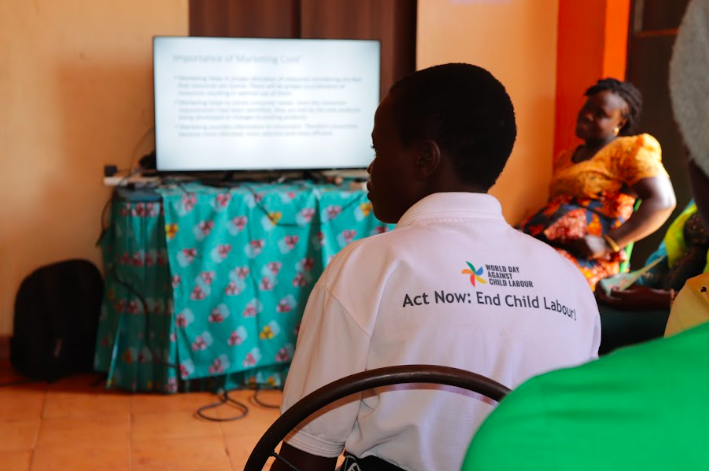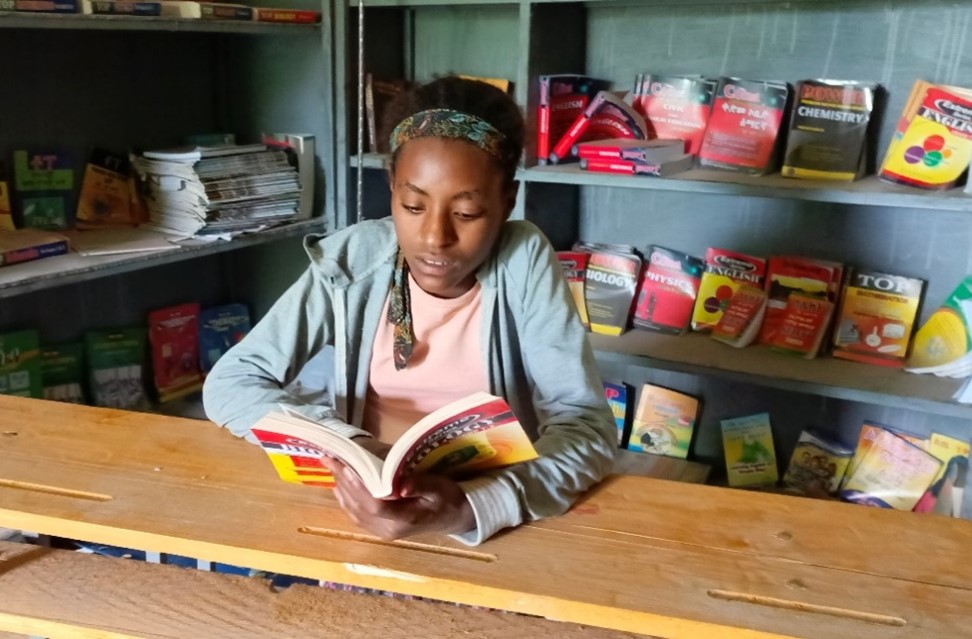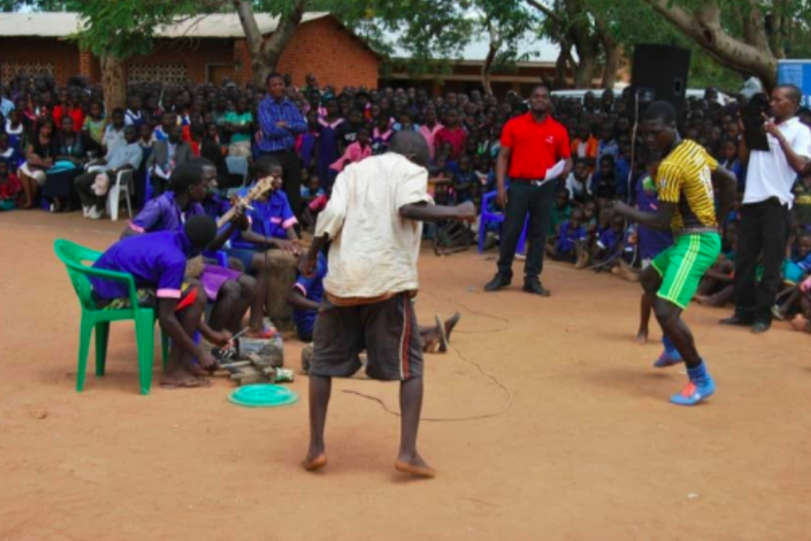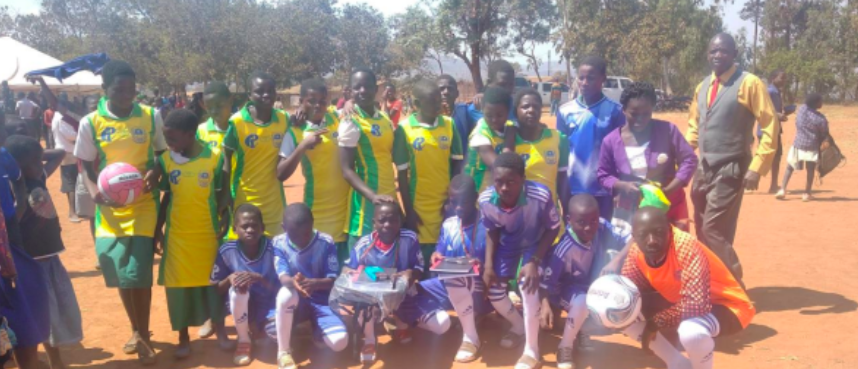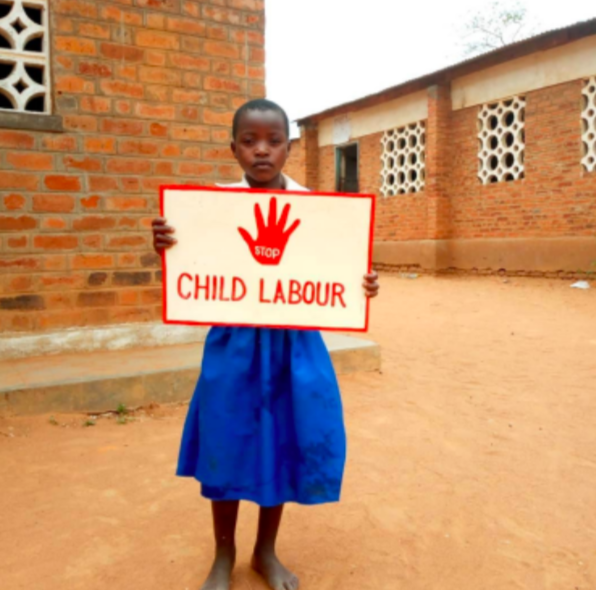How to end child labour globally is a constant discussion without always having precise answers. But at a local level in the eastern border district of Busia, Uganda (an area of small-scale, artisanal and informal gold mines), the NGO Environmental Women in Action for Development (EWAD) has simplified the question of ending child labour, based on the child labour free zones model. In this account we hear a story gathered by EWAD about a young woman the project helped rescue from labouring in the mines as a teenager. In addition, a video on Child Labour Free Zones is provided by EWAD.
Community-based model
Using a community-based model, EWAD has made the case that, when everyone in the community gets involved, ending child labour is possible and need not be a complex puzzle to solve.
Since 2019, EWAD has used the area-based approach to search communities in four areas (Amonikakine, Busitema, Sikuda and Tiira) to identify cases of child labour. EWAD also makes community-based prescriptions to address child labour cases using a collaborative community-based model that empowers influential community members with knowledge, skills and information to fight child labour.
With over 60 per cent of the district’s children trapped and slaving in the mines as child labourers, due to ignorance and economic pressures in their households, EWAD’s community-based mobilisers are taking the lead by creating child labour free zones.
Phillip Ochakolong leads a team of community mobilisers who go around the community, especially the mines, with a megaphone telling the adults that no children should work in the mines and that children should be in schools. He says:
“We started as a small group in 2019. Today, we’re over 40 community mobilisers supported by vigilant people in the community who not only report to us suspected cases of child labour but also mobilise communities to take their children to school.”
Philip further explains that this has been made possible by an informed, committed and supportive local government leadership at the district and community level, coupled with EWAD’s persistent capacity building:
“The district officials, both technical and politicians, appreciate what we do. They are always calling us to encourage us and also to know how the situation is on the ground with children going to school.”
According to Mr Barasa, Busia district’s senior education officer, the community mobilisers empowered by EWAD are doing the work meant for the district leaders. Without them in the communities, not much would have been achieved:
“District leaders are very few and can’t be everywhere. EWAD has helped us to do our work deep in the communities where we can’t reach. This is a very good initiative, and we’re seeing the change through the increase in children’s enrolment in schools like Tiira primary school and also in their performance.”
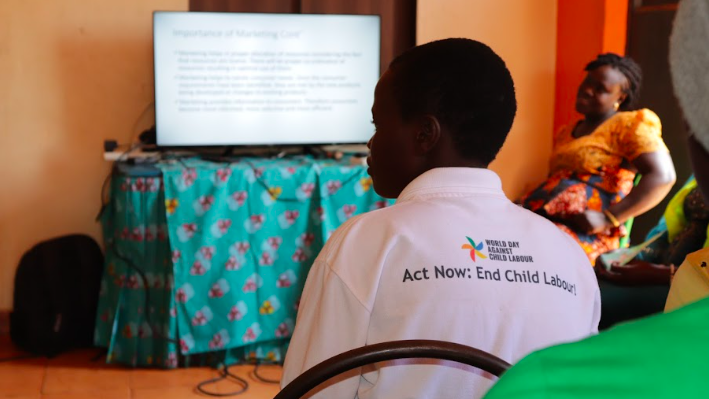
Education and skills training as a solution: Elizabeth’s story
Margaret Tuhumwire, the Executive Director of EWAD, takes up the narrative:
“After their rescue, we counsel them together with their parents, with encouragement to take them back to school if still interested and of school-going age. Those who think otherwise are given the opportunity to join the EWAD vocational skills training centre, where they learn hands-on skills – and by doing so, we’re sure they will have decent employment as opposed to child labour.”
In 2020, a young mother named Elizabeth Emojong, aged 18, was rescued from the gold mines in Tiira. She had been working under the scorching sun, jumping over deep mine excavations with her 5-month-old baby strapped to her back. When Elizabeth had become pregnant, she chose to have her baby rather than an abortion, which her community regards as an organised form of murder.
Elizabeth recalls:
“My parents advised me not to get married to the boy who impregnated me because I was still too young to shoulder the responsibilities that come with marriage. The father of my child couldn’t support me and the baby. We had endless quarrels, so I left him. I ended up in the mines to scavenge for some gold in the debris. But I would also carry heavy basins of ore long distances to the sluicing areas.”
In her suffering, Elizabeth was noticed by a community mobiliser, who rescued and counselled her. The team encouraged her to enrol at the EWAD community-based vocational skills centre to study tailoring and fashion design. More than 180 young people who have been withdrawn from the mines have acquired employable skills at the EWAD centre – skills in fashion design, hairdressing, catering, mechanics and carpentry.
“I was admitted as a learner,” says Elizabeth. “Now I’m also training others who are rescued and brought here to learn in this safe environment. I have mastered tailoring all styles of clothes. I can repair the sewing machine and I have generated some small capital that enables me to buy the raw materials.
“My life has changed totally. I am confident with my skills in fashion and design. I can make money for my daily expenses and belong to a youth savings group where I have my savings as I plan to improve my business. My child can go to school safely and far away from child labour. In fact, the EWAD tailoring centre is now my office and my daily starting point.”
Ms Tuhumwire adds: “We want to make sure that child labour is history in Busia. We’re taking this message to all communities, government leaders, non-government organisations and businesses to make sure children don’t participate in providing labour.”.
Documentary by EWAD on Child Labour Free Zones

